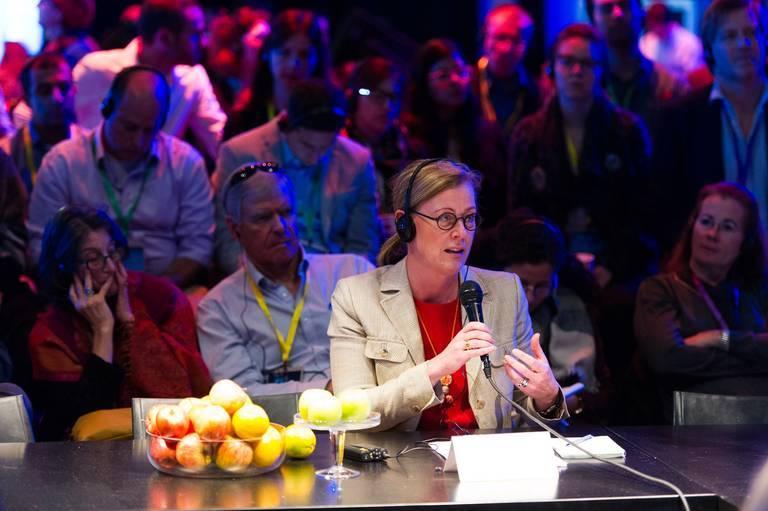Investors Turn to Israel for SRI Opportunities
By Jan Lee
Originally published on TriplePundit
This article is sponsored by Maala and went through our normal editorial review process.
The drive for socially responsible investment (SRI) continues to gain support, both in developed and underdeveloped economies. According to the Global Sustainable Investment Alliance, as of 2016 more than $22 trillion in assets were being managed under various SRI strategies across the globe, with Europe, the United States and Canada taking the lead in recent years.
Interestingly, one country that is often left off the map when talking about the growth of SRI is Israel. Best known as an incubator for startup industries, it’s played a major role in revolutionizing the way today’s technology is used to address the world’s greatest environmental and social challenges. Companies like Netafim, Salt of the Earth, the Strauss Group and Shikun & Binui helped cement Israel’s standing on the Economist’s 2016 list of the world’s most socially innovative nations. They have also helped to affirm that environment, social and governance (ESG) factors can, and should have a role to play in the ranking of Israel’s most innovative companies.
In recognition of this growing focus, in November 2017 the Tel Aviv Stock Exchange (TASE)launched two new sustainable investment indices: Tel Bond-CPI Linked Maala and the Tel Bond-Shekel Maala. The move also dovetailed with a request by Israel’s Ministry of Finance’s capital markets commissioner to report on ESG considerations (link in Hebrew).
But incentivizing investment in Israel’s booming tech, food and agricultural sectors has not been without its challenges. Efforts by supporters of the boycott, divestment and sanctions (BDS) movement to discourage investment in Israeli companies has led to reticence by some investors, largely due to misinformation about Israel and its companies, said Sasja Beslik, head of Group Sustainable Finance for Nordea Bank in Stockholm, Sweden.
Nordea’s exposure in the French light rail company Veolia led Beslik to travel to Israel where the company was building Israel’s first light rail, the Red Line in Jerusalem. He said his trip helped form his perspective about the value of investing in Israeli companies that can demonstrate that they incorporate ESG practices into their performance. This trip, he said, affirmed the need for investors to do their own “on the ground” research themselves.
“I went to Israel twice and I met the corporate responsibility representatives [at Veolia],” Beslik said, while adding that the assertions that BDS supporters had made that the Red Line Rail was contravening the rights of Palestinians did not add up to what he saw. “We took the light railroad from end station to end station. There were a lot of people on the train. We made our own assessment of what this train is really contributing to.
“[We decided] to continue investing in Veolia, because we believe this train in Jerusalem is actually not anything out of line with our investments.”
But it’s also important to view investments in light of the social contributions they can make.
“Anything that leads to economic development everywhere in the world is good,” Beslik told listeners at the Maala 2017 Conference, How can Israeli Market Leaders Attract Sustainable Investors. “The way we need to see it from our perspective is to take away the politics and see what it actually means from the local perspective, what does it mean for the people and the local business?”
ESGs and investing in Israel
But just what makes a good, sustainable investment when it comes to Israeli companies? How do potential shareholders know their investments will meet today’s ethical standards when it comes to environmental, social and governance (ESG) criteria– the accepted benchmarks of sustainability in today’s marketplace?
Those are questions that Nordic investment rating companies deal with all the time, and not just when it comes to Israeli SRIs, said Anette Andersson. Andersson is a portfolio manager & ESG investment specialist for SEB Group in Stockholm, Sweden. She said that there is a strong movement in Nordic countries to encourage investors to be transparent and publicize their fossil fuel investments.
“[We] like to see companies report on their own carbon footprint so that we can tell our clients how much of their money is actually vested in carbon,” Andersson said.
As with Nordea, SEB’s assessment of sustainable companies is based on the information it receives about a company’s sustainable practices and principles, not on their geography.
“We judge companies by the same criteria regardless of where they are situated,” Andersson explained, “We like to see how they work, whether they are aligned with the sustainable development goals (SDGs).
And that’s where rating companies come in, said Ulrika Hasselgren, the former Global Head of Responsible Investment Strategy & ESG for Institutional Shareholder Services(ISS) in Stockholm (currently head of responsible investment at Danske Bank). ISS serves institutional investors and asset managers that are looking to invest in line with the sustainable investment policy and criteria. She said the UN Global Compact Framework(UNGCF), with its 10 principles covering environment, human rights, labour standards and anti-corruption isn’t the only set of benchmarks that a rating company or an investor, for that matter can use to assess a company’s goals and long-term potential, but it has become a commonly used framework.
Hasselgren said there are different perspectives among scoring agencies as to the best way to gauge how a company manages its environmental, social and governance risks. While many rating agencies will rely on questionnaires and interviews to determine a company’s risk factors, ISS always bases its assessment on publicly available data and information from the company and other open sources, including the company’s website, annual and sustainability reports.
But assessing a company’s governance and sustainability performance can still be challenging when it comes to interpreting and appreciating a company’s commitment to ESG, she said.
“Many companies around the world have signed up to the UNGC. They report on their support for the principles and what they do in each area; e.g. improving labor standards, implementing anti-corruption programs, dealing with environmental impact and upholding human rights” said Hasselgren.
“These companies may then be approached by rating agencies and other organizations suggesting that the companies, according to their assessment, are breaching the principles of the UNGC.,’ The different interpretation of a common framework, such as the UNGC naturally is a challenge to deal with for companies .”
Hasselgren pointed out that because the UNGC is a voluntary set of principles, the onus is often left to the company to determine how to apply the principles. But an experienced investment specialist will take those deliberations into account.
Andersson added that many investment firms, SEB included, will rely directly on the rating agencies’ scores to determine whether a company is a good investment fit for their clients.
Keeping up with UNGCF reporting is important to being considered a good investment risk.
“[It] is kind of essential for companies to get reasonable scoring because otherwise they are going to get excluded from the investment universe just by poor performance,” Andersson said, and added that poor performance doesn’t necessarily mean a company is failing, just that “there’s no reporting we can find.”
Good communication can drive investment
And when it comes to attracting investors, said Hasselgren, disclosure and communication can be key. Making sure that the website contains information in English makes it easier for rating agencies to make a correct assessment. Doing so also sends a signal to investors that the company is transparent, wants engagement and supports foreign investment.
But Hasselgren said transparency is a two-way street, too.
“Rating companies need to be transparent on their approach, [what] they are asking and why they are asking it, so that Israeli companies understand what they are supposed to answer and how they can respond in a meaningful way,” said Hasselgren.
She said understanding the nuanced setting is important. “I think that many Israeli companies have been approached by rating agencies and other organizations asking particular questions based on an already made assumption of the company’s standard or performance. That, of course, doesn’t really give room for an open and constructive dialogue.”
The business case for investing in IsraelBeslik also challenged other investment firms that may have reservations about investing in Israel or Israeli projects, to do their homework first, as Nordea has done.
“You know, in most of the companies that have excluded Israeli companies in the world, most investment managers have never been to Israel. And they have never seen what we have seen and I think my proposal to them would be to actually do that,” said Beslik. “[The] economic benefit of all the investments in Israel is an economic benefit for all of the people living in that area, regardless of who they are.”
Investing in Israeli innovation, Andersson said is more than a means to good returns. “It ties back to the SDGs (sustainable development goals) because if we are going to reach the goals, there has to be a lot of innovation to resolve the huge issues that we have around the world right now,” like energy efficiency for example. Transparency and collaboration on both sides, opens the pathway to better use of resources, said Andersson.
Hasselgren’s advice to Israeli companies is to be forthcoming and “tell their stories” so rating companies and investors can appreciate the effort they are making in ESG. “[There] are multiple ways you can tell the story,” said Hasselgren,
Whether it’s relating how a company adheres to the UN Global Compact, the environmental or social strategies they are using to better the world, she said, transparency and communication are key to success for both companies and investors.
Images: Yohav Zohar/Maala; Flickr/Terrazzo; Sharon Amit/Maala




